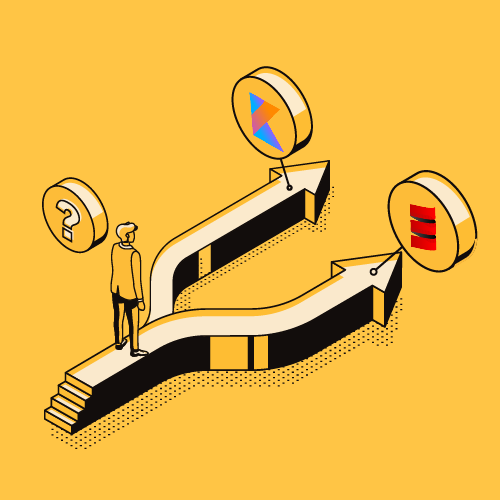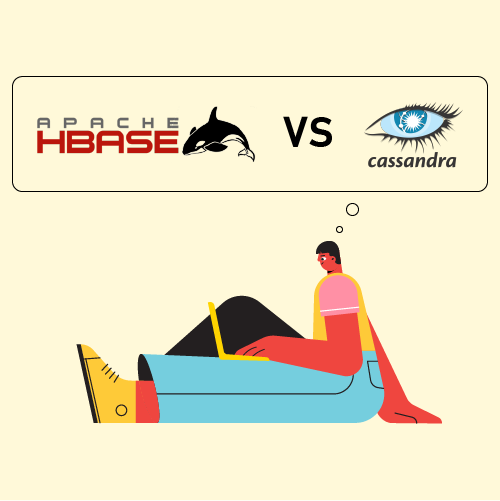- Waterfall Mobile App Development Approach
- Advantages of Considering Waterfall for App Development
- Disadvantages of Preferring Waterfall for App Development
- Agile Application Development Approach
- Benefits of Introducing Agile into Your App Process
- Drawbacks of Working with Agile Strategy
- Which Mobile App Development Methodology is Better for Your App Needs?
- When to Use Waterfall Model
- When to Use Agile Methodology
When it comes to mobile app development, the way you approach an app idea has a great impact on how the outcome would be. As you might be familiar with, there is no ‘one-size-fits-all’ development process that every app development company should follow. A lot many types of application development methodologies are existing in the market, prevailing based on different factors such as app requirements, features, and the direction of the workflow. However, when it comes to picking the best mobile app development methodology, the two that typically dictate in the market are Agile and Waterfall. The two about which we will be discussing in this article.
Waterfall Mobile App Development Approach
Waterfall methodology is the earliest and sequential app development lifecycle model pertaining to the market. In this mobile application development approach, the project is divided into different phases (initiation, analysis, design, development, testing, and deployment) such that one cannot move to the next phase without completing the existing one. Meaning, there’s no possibility of overlapping the phases. Because of the same, it is also referred to as a linear-sequential app development lifecycle model.

The Waterfall approach avails ample of benefits to everyone involved with the mobile app development process. A few of which are:-
Advantages of Considering Waterfall for App Development
- The foremost benefit of the Waterfall approach is that it is quite simple and easy to comprehend and implement.
- Since app development phases are processed and completed one at a time it is quite easier to determine deliverables and manage the rigidity of the model.
- As explained in the last pointer, it is not possible to move to the next mobile app development phase without completing the existing one. This clears the doubt regarding maintaining definite stages and improving the review process.
- Waterfall methodology enables one to easily get an estimate of mobile app development cost breakdown and timeline.
- Above all, this app development procedure involves documentation, making it easier to
follow the logic of past projects and lay the foundation for future projects.
Whilst these are the benefits that make one fall for Waterfall for their application development needs, it is better to not get swayed at once. And, look into the limitations of this approach too.
Disadvantages of Preferring Waterfall for App Development
- The biggest drawback of Waterfall mobile app development methodology is that you cannot return to the previous phase until the whole life cycle gets completed. That means, if the market trends or customer needs changes in between, you won’t be able to update an app until it is fully ready.
- Since testing is performed at the end of the process, it is likely that you might find it difficult to tackle bugs and errors that would have been easily removed if catered at the initial level. A result of which is that you might not be able to launch a fully-functional, bug-free mobile application in the market.
- Even a minor change in the app means beginning from scratch, which ultimately adds to the mobile app development timeline, cost and efforts.
- The customers won’t be able to get a glimpse of the mobile app until the coding phase is started.
- Without a working prototype, the users might not be able to figure out what exactly they want. Since the requirement gathering is the first step of the waterfall app development methodology, this results in the risk of missing a crucial detail. In short, it won’t be possible to perform a scoping session of the complete project at once.
While this was a brief introduction to the Waterfall approach, let’s take time to understand Agile strategy to get better clarity of Agile vs waterfall app development methodology comparison.
Agile Application Development Approach
Agile methodology is an iterative, rapid application development approach that involves a more ‘time-boxed’, team-based, sprint action style. According to the top mobile app development companies, this strategy emphasizes on being lean and creating minimum viable products (MVPs) over a desired period of time while enhancing each particular iteration.
The different phases to consider in the development cycle of mobile apps can take place in parallel, with a track of expected features and requirements. Thus, teamwork, continuous improvement, constant feedback and the adaptability to changes are the key highlights of the Agile development strategy.

According to our development team, the following are the advantages and disadvantages of agile app development approach.
Benefits of Introducing Agile into Your App Process
- The agile mobile app development methodology emphasizes on frequent communication and teamwork, which maintains the workflow and enables in delivering the result-oriented app.
- Testing is done at the end of each phase which means an earlier encounter with the bugs and mitigating them. At last, you get a high-quality app with the agile process.
- The application goes into the hands of the users much earlier, even before the launch. This is helpful to determine their response towards the app and therefore, reduces the chances of building an app nobody wants to try even.
- The short application development cycles increase the flexibility of the process. You can easily add, remove or update any feature at any point of the development cycle or even when the app is already in the market.
With the advantages of agile app development approach covered, let’s move towards the limitation of the same.
{Also read: A Guide To Agile Scrum Methodology in Mobile App Development}
Drawbacks of Working with Agile Strategy
- As Agile strategy focuses on active team involvement and face-to-face interactions, it is necessary that the whole team is committed to the project (and better in the same physical space). Otherwise, the project will take longer than estimated.
- This technique prefers working software over a detailed-documentation. This is good to some extent, however, the agile app developers have to maintain the right balance between code and documentation.
- Since the Agile methodology is associated with frequent reprioritization, the product might not get delivered within the pre-decided time frame, unless the right mobile app development companies you are working with have strong experience with the methodology.
Now, as we have seen the benefits of agile development over waterfall and vice-versa, it is the best time to pick the winner.
Which Mobile App Development Methodology is Better for Your App Needs?
Both the mobile app development approaches are good to consider for one or the other situation. So, the best way to decide the right option is to look into the requirements first. Which implies looking into when Waterfall app development approach is better and when is Agile one.
When to Use Waterfall Model
- App requirements are clear, definite, and well-documented.
- The concerned technology is well-understood and not dynamic.
- There are no ambiguous requirements in the application development process.
- Ample resources with requisite expertise are available.
- The project is short.
When to Use Agile Methodology
- No prior planning or documentation is done
- Minimum app requirements are involved in the process.
- The development environment is unsteady.
- Limited resources are available at any point in time.
- There’s a need to launch the app at the earliest.


Excellence Together

Which Mobile Platform Should Startups Choose in 2021: Android Or iOS?
Back in 2008, the iOS App Store was launched with 500 apps. Today that number has skyrocketed to 1.85 million apps that are available for users to download. Android users have a bigger app universe to browse from that consists of over 2.56 million apps available in the Google Play Store. It is safe to…

Kotlin vs Scala: Choose Right JVM Language for App Developers
“The folly of one man is the fortune of another” As quoted by Francis Bacon, meaning, ‘One man’s misery or misfortune is the fortune of another.’ This saying has become true for the JVM world. With the fall of Java – the programming language that entered the market in 1995 and changed the complete story,…









